This cute little box promises to let you manipulate sound and play live with samples without a computer. Andreas Roman returns to CDM with another in-depth, hands-on hardware review.
This time, it’s the US$599 1010 Music Blackbox, a compact, boutique sampler and sample manipulation workstation. (See Andreas’ previous review of Elektron’s Model
Meet the Blackbox
I’ve mostly stayed away from modular, so I was unfamiliar with 1010 Music, a company that’s known largely for their Eurorack offerings. (The Blackbox is their first desktop offering.) Then I started seeing the 1010 Blackbox as early adopters posted their reviews.
So what is it? It’s a sampler. It’s neat and tidy, small enough to fit in your open palm. It’s got a focused set of features that can take you from nothing to a complete something that can even sound like it happened in a studio – if you work it right. It’s built like a brick. It’s got a navigation system so clever, you might feel sorry for whoever wrote the documentation because you won’t need to read the manual. And since it runs on USB power, you can even power it with a mobile phone battery.
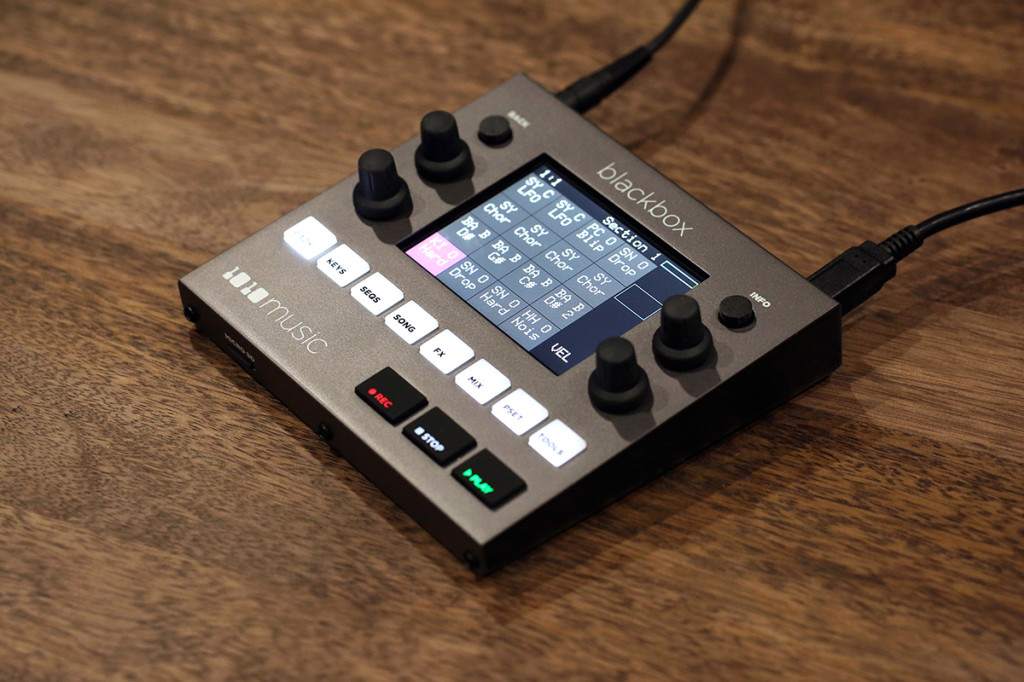
Look and feel
On the surface, the Blackbox seems ordinary. A large touch screen dominates the center, like a window into its heart if you will. A set of buttons on the unit at the bottom allow you to flip through the sections. Four endless encoders surround the screen, used for navigation and parameter tweaks, and two
It looks a bit crude on
It’s neat, practical, and perfect for the purpose. Within the hour, I’d sampled, sliced, sequenced, processed, and built a song with external as well as on-board factory material. I even made a structure for composition and rendered it into a WAV file – all within the Blackbox, by my kitchen table.
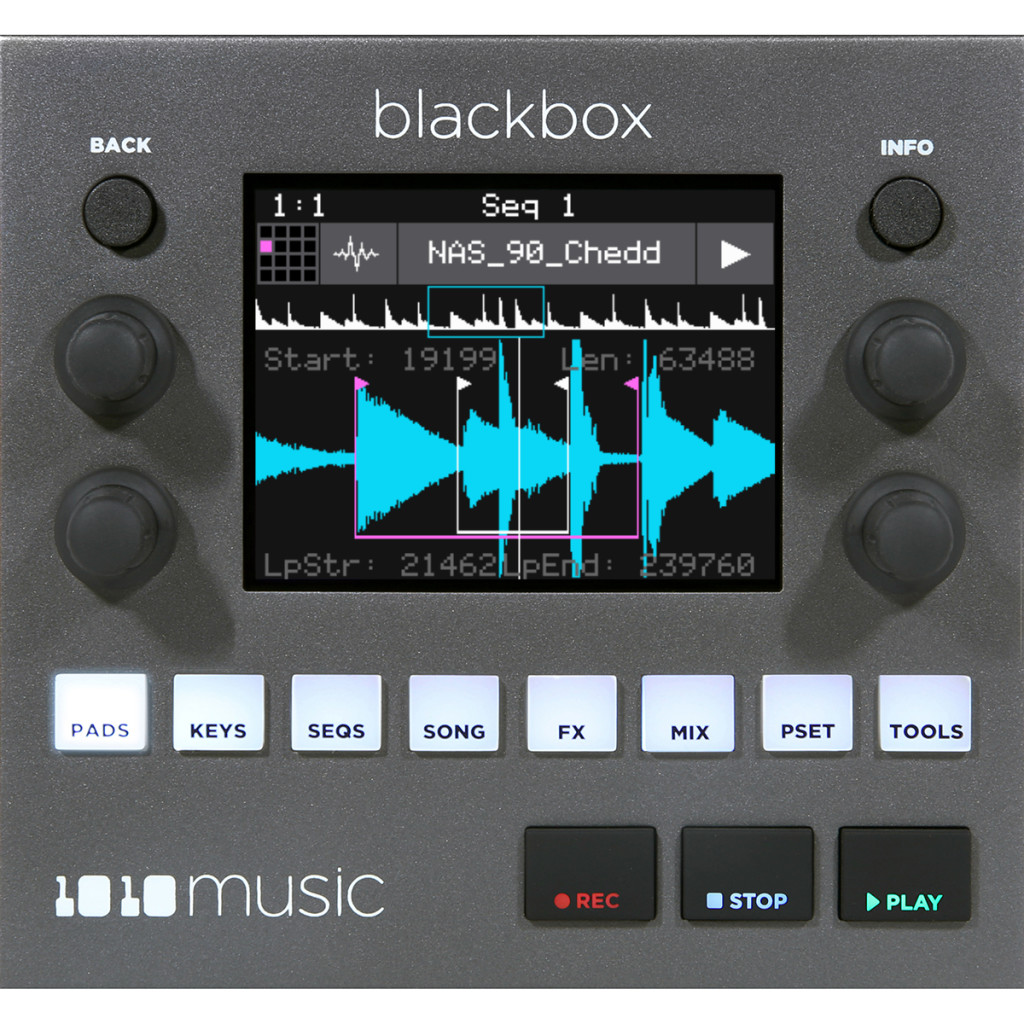
Sample slots and editing
Starting from the left-hand side of the unit, let’s begin with assignable samples. You get sixteen of these, which can be anything from a one-shot to minutes-long audio sequences. (You could theoretically even go hours – the Blackbox streams from an SD card.) [Ed. Note that that’s very much what’s missing on hardware like the new Roland MC-101/707, which requires you to copy audio into internal memory, both adding steps the workflow and limiting sample length and storage. -PK]
Also, thanks to a smart mapping system connected to sliced-up samples, one slot can trigger multiple samples from the virtual keyboard or from external hardware.
Tapping the on-screen pads can trigger different behaviors. With a combination of sync options and settings, you can either let the sound fire as you strike, which is preferable for live drumming and FX, or you can have it sync to a section of the beat and trigger perfectly on cue – great for looping or longer, pre-recorded sections. Although sixteen slots for samples might not seem much, the flexibility makes this 4 by 4 grid quite potent. You could stay here for an entire set, mixing loops and complete backing track sections with mad live drumming skills, all in sync to
From the sample section, you also access deeper editing functions such as an envelope per sound, a filter, start- and end-points for loops, time-stretch parameters, and so on. The shaping is more geared for sculpting your sample to work in a mix, and less about creative effects. The filter acts like an EQ that blends between states. The lower you go, the deeper the thuds and greater the cutoff. Aim high, and you’ll lose the rumbling deep ends and position your sample in the cleaner forefront. The amp envelope is used to trim what’s already there, so if your bass sound doesn’t snap on its own, don’t expect the decay, sustain, and release to fix that for you. Just watch your source material, and these tweaks will serve you well for their intended purpose.
One very impressive update is the granular option that 1010 threw in as I was writing this. With a neat combination of additional features for granular synthesis, you got access to parameters that had me tearing up drum loops like I was the coolest thing from Iceland since last winter. With just an extra screen for granular, you’d think that it’s too barren to serve the purpose.
But that’s the thing with the Blackbox – what’s on offer has been so carefully selected, the combinations of what you can achieve grow into something larger than you’d think at first glance.
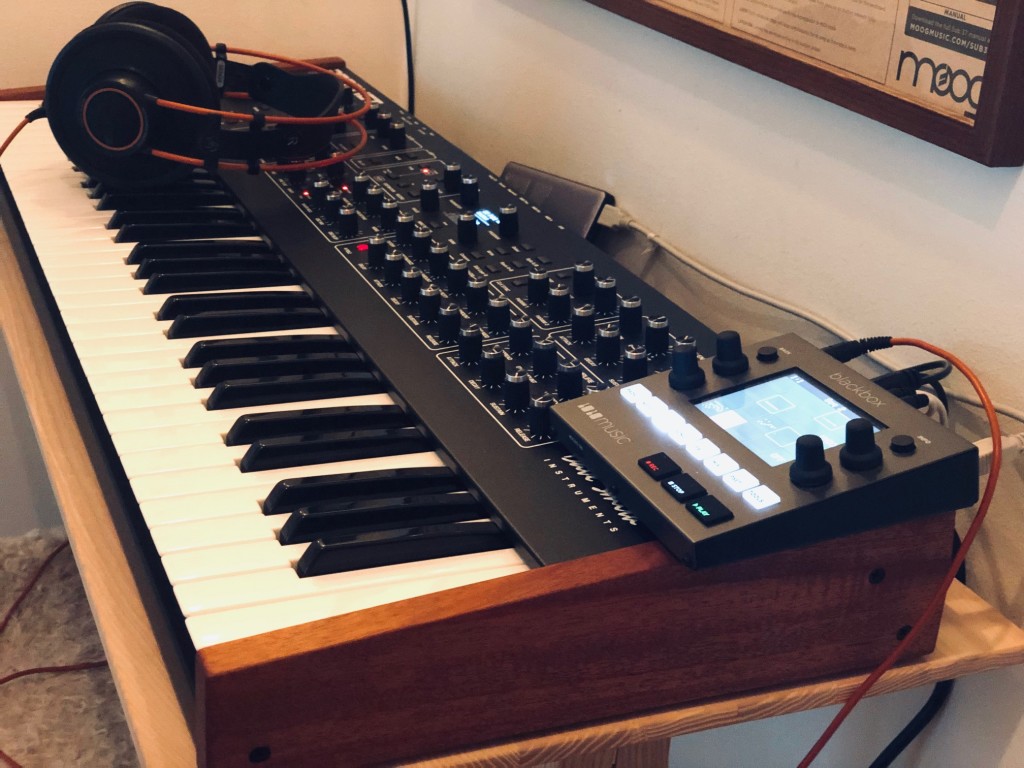
Sequences
This emergent design is even more evident in the Sequencer section, which records your live drumming or clip launches from as many samples as you prefer. The Blackbox holds sixteen patterns per project, but those patterns can play all samples at once and polyphonically, too, as long as the CPU allows it. Patterns aren’t bound to a specific sound, but just to whatever performance you record into them.
Each pattern has its own time signature and number of
There’s plenty of room for extended live takes here. To push it, I recorded a few 64-bar loops from my Tempest, set them all to sync and time stretch from within the Blackbox and launched them from just one pattern, at the lowest possible time signature to reduce cycling. Worked like a charm. Next, I tore up the (kitchen) floor with a 32 bar disco lead from a Rev2, and the crowd (my wife and kids) went wild.
While the sequencer itself has a rudimentary system for editing notes, with only the bare minimum allowed for editing – mostly triggering and timing, really – the patterns themselves can be played in sequence or simultaneously, launched in sync or on the go. You can have all of them run at once, playing a selected number of samples, at different time signatures and number of steps. The kind of polyrhythms you could pull off with
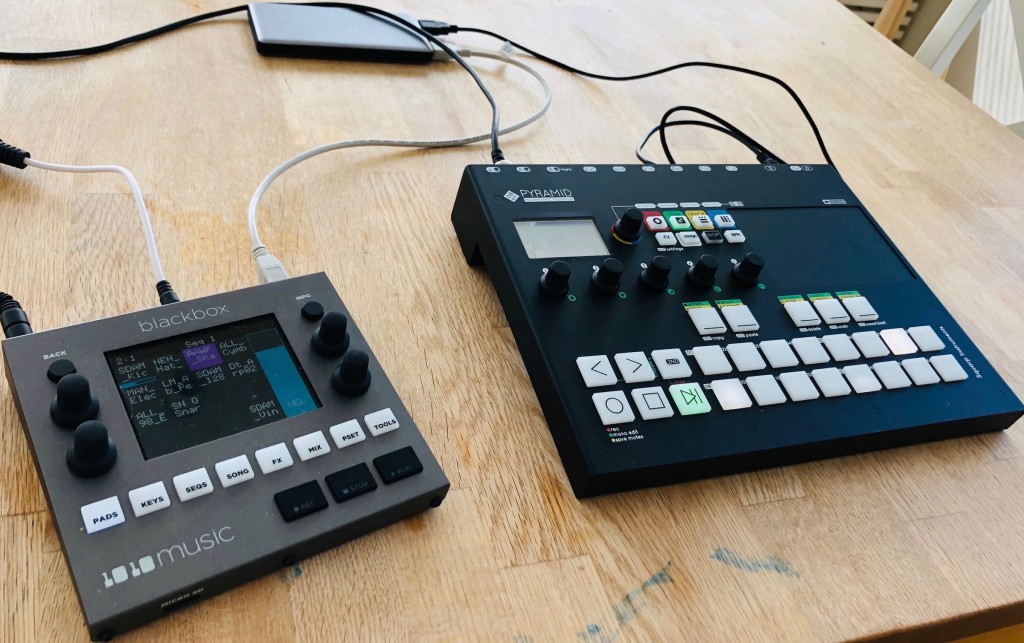
And that’s even before getting to Song mode. Here, you can live-record the starts and stops of each pattern, creating a master version of your preferred combination of patterns as they go on and off while you’re jamming. Each part of the Song has its unique number of bars, so you can have one section that’s just two bars, another one that’s sixteen, then a third that’s eight, and you can string those together into a list that plays these in order, or launch them live as separate overarching sections of your performance. Doesn’t matter if you’re an improvised act or a structured studio musician. You can be as spontaneous or as meticulous as you want.
Effects and MIDI support
Before we get to live sampling/audio recording, the remaining features are also fairly basic but useful. Each sound can hold a combination of reverb and delay, with the dry/wet output set per slot. Both the delay and the reverb contain master settings for all channels and they provide enough parameters for you to move between small, tight rooms with slap delay bouncing around, to wide, open spaces and long tails of slow-moving echoes. They sound slightly better than good and in a mix, they’ll do just fine. What remains then is a mixer window where you got the basics covered such as output, panning and muting, no EQ but a subtle and neat on/off compressor further to the right, and then browsers and setup tools for sync, file management, midi channels, metronome tweaks, and the like.
MIDI support on the Blackbox was a bit lean at
I used these recordings to try and talk my wife into realizing that our home needed a Yamaha CP88 and how great it would be for the kids, but I can’t blame the Blackbox for my failed attempts at diplomacy. Our living room remains void of a piano still (but the kitchen’s still disco, so don’t worry).
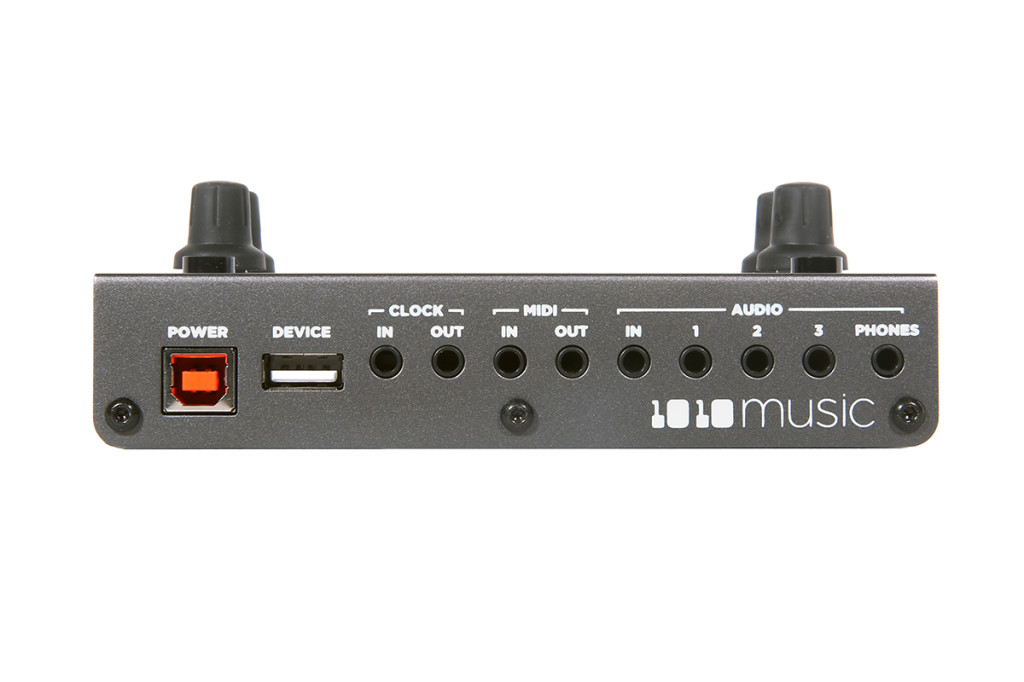
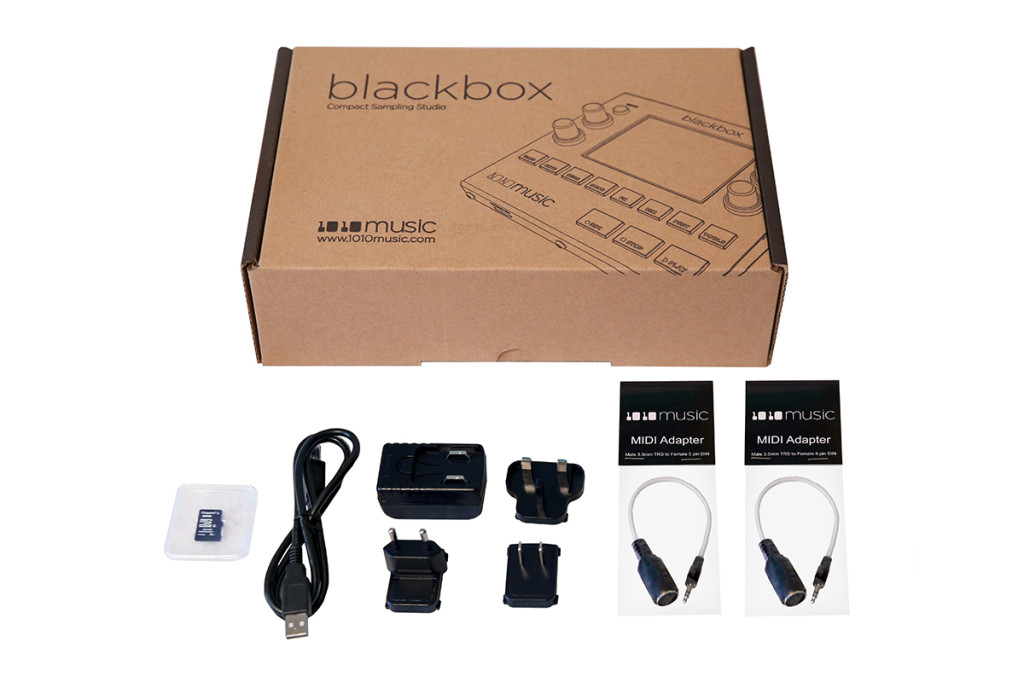
Yes, it’s a real sampler
Oh, yeah. Also, this thing samples. Plug in your audio source, adjust the gain and either go for manual sampling, threshold by audio or – and this one’s my favourite, an old combat wound from the Octatrack years – midi synced recording, with perfect start and end points. It writes directly to a micro SD card (included at purchase), and it stops when you or the memory card tells it to. So if you got massive space and you want to sample your hours long ambient session, just go ahead.
Really, all you other manufacturers of samplers out there. How is it that you don’t get that this is all we need? A basic set of timing options, real-time stereo recording straight to card like if it was tape, great converters and some flexibility on the start trigger. Look at how it’s done by 1010 Music, and take notice. Mono sampling only? I don’t think so. 64mb memory? Puh-leease. This is 2019 and the Blackbox knows it.
So sampling is a breeze no matter if you’re going for a one-shot snare or improvised epics. You can also use the Blackbox as a live looper if you set it up as such. There’s resampling, both by external hardwiring and internal recording. I routed a few loops through one of the box’s three stereo outs (yep, three – pretty neat, huh?), changed it to mono and sent its audio into a Sherman Filterbank 2.
After some mad mayhem filter tweaking, I had something that I liked and recorded it back into the Blackbox external input. Obviously, doing it like this makes monitoring tricky and until 1010 Music implements some kind of cueing (and they might never, you know, and we should be cool with that), you either accept the challenge or find a way to monitor the signal externally before you record it back. I used an Analog Heat for the purpose, which was overkill but stupid fun. And also, if all you want to do is resample what’s going on within the box, internal resampling was added as an update during the summer. As long as you got one slot free, you can render your entire performance down into one WAV file.
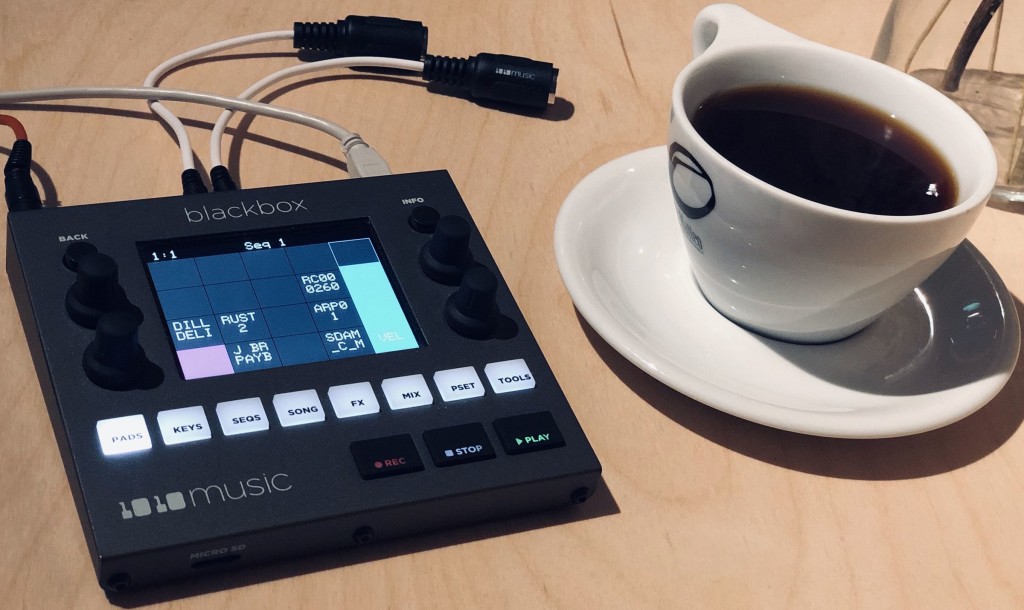
Conclusions
The Blackbox is not about its list of features. You could still think this instrument falls short if you compare it to beasts like from Elektron, Pioneer’s Toriaz SPS-16, or the Synthstrom Deluge, and the MPC family, of course. Maybe those kits or their alternatives is what you need.
But one of the main points with cleverly built hardware is the way it all comes together — how you interact with the instrument, how all these sets spark ideas as you go with the flow. And the Black Box has a flow that few others can match.
Sure, there are limits more obvious than others. There’s the sixteen slot system. You can get around this with slicing up your sample chains; it’s not really a complete workaround, but a neat way to get more out of the grid. Even so, sixteen is sixteen. This same limit applies to the sequencer patterns, and since the Blackbox so quickly helps you get results, it’s worth pointing out that you will hit a full stop at some point solely on the quantity of space available for your sounds and patterns. Seeing as it reads from the card, I’m not sure why this limitation is in place, other than the fact that each project becomes very defined. Which, however, follows the ethos of this instrument quite well. It’s very clear on what it is and what it’s not.
Also, I haven’t mentioned modulation, have I? That’s because there is none. You can affect a few parameters from external gear, but there are no LFO’s and no automation recording, including what comes from MIDI. Remember the above example, my in-store sessions with the Yamaha CP88? It recorded my playing but none of my interactions with the sustain pedal.
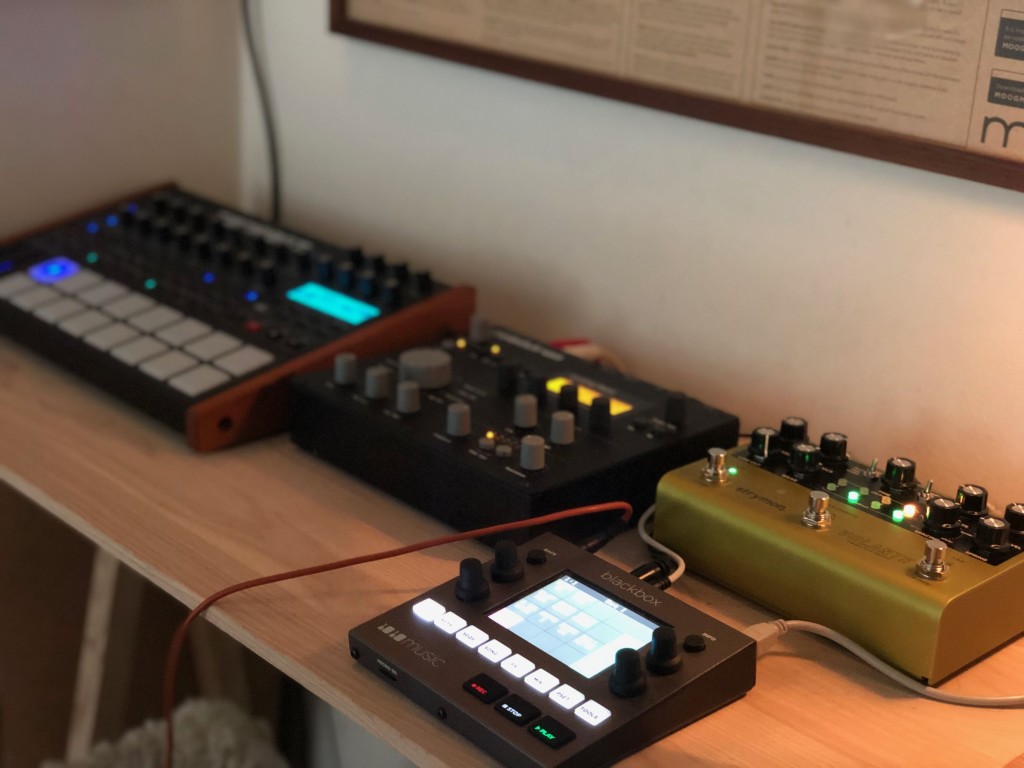
And even though the onboard delay and reverb are both solid, some of you will want for at least an extra parameter or two, to bring the effects to stranger places. Or maybe you’ll wish for more effects options – a chorus, perhaps an EQ, a tint of overdrive. I don’t miss it, but you might. But again, back to the clarity of this thing, because if you’re going to include just one or two effects, you’d certainly do right to go for
Had I reviewed the Blackbox in June, I also would’ve said that the MIDI implementation left me wanting. But that’s no longer the case. Each update has improved the MIDI features considerably, and if you look at the latest addition with the granular options introduced, it’s clear that 1010 Music is devoted to the development of the Blackbox.
If you acquire the Blackbox
A sample jam
We enjoyed Andreas’ music last time – here’s a real-world example jam among various he made while working with this.
He explains:
It really pushes the Blackbox. 14 of 16 sample slots are used. The sequencer launches loops and triggers one-shots, some of them just brief 8 step tracks and some close to 64 bars long, running in parallel. On top of that, it’s all strung together with the song mode, and no external processing has been used. The headroom in this thing is pretty impressive.
Also, anyone else who has lived as I have in the metro NYC area, I presume you also can’t stop hearing the signature 1010 WINS radio ID? (Ah, nothing says “good morning” quite like hearing a major seventh of xylophones and … trumpets. I literally had this on my alarm clock for a while — jarring.)